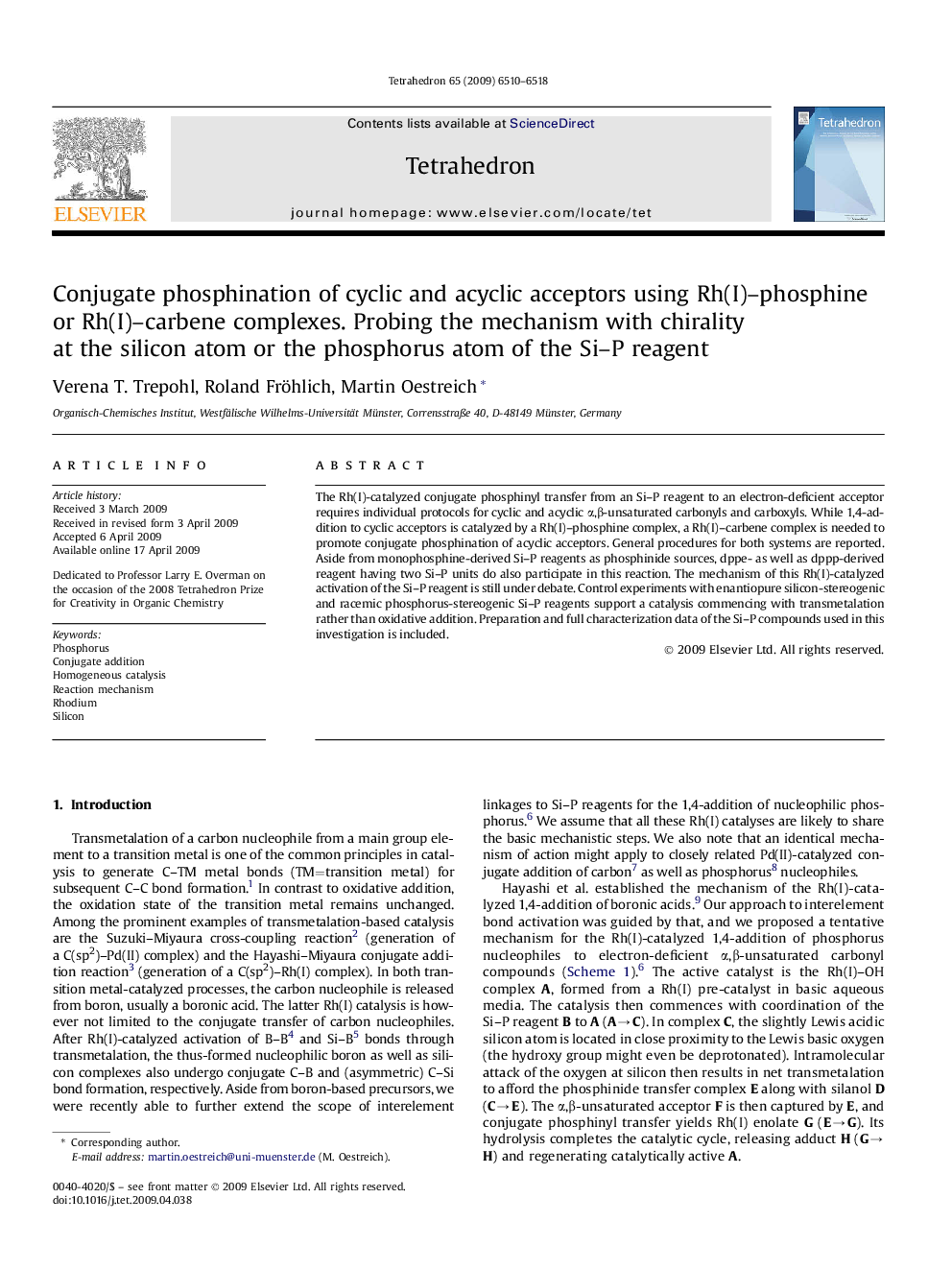| کد مقاله | کد نشریه | سال انتشار | مقاله انگلیسی | نسخه تمام متن |
|---|---|---|---|---|
| 5222806 | 1383466 | 2009 | 9 صفحه PDF | دانلود رایگان |

The Rh(I)-catalyzed conjugate phosphinyl transfer from an Si–P reagent to an electron-deficient acceptor requires individual protocols for cyclic and acyclic α,β-unsaturated carbonyls and carboxyls. While 1,4-addition to cyclic acceptors is catalyzed by a Rh(I)–phosphine complex, a Rh(I)–carbene complex is needed to promote conjugate phosphination of acyclic acceptors. General procedures for both systems are reported. Aside from monophosphine-derived Si–P reagents as phosphinide sources, dppe- as well as dppp-derived reagent having two Si–P units do also participate in this reaction. The mechanism of this Rh(I)-catalyzed activation of the Si–P reagent is still under debate. Control experiments with enantiopure silicon-stereogenic and racemic phosphorus-stereogenic Si–P reagents support a catalysis commencing with transmetalation rather than oxidative addition. Preparation and full characterization data of the Si–P compounds used in this investigation is included.
Figure optionsDownload as PowerPoint slide
Journal: Tetrahedron - Volume 65, Issue 33, 15 August 2009, Pages 6510–6518